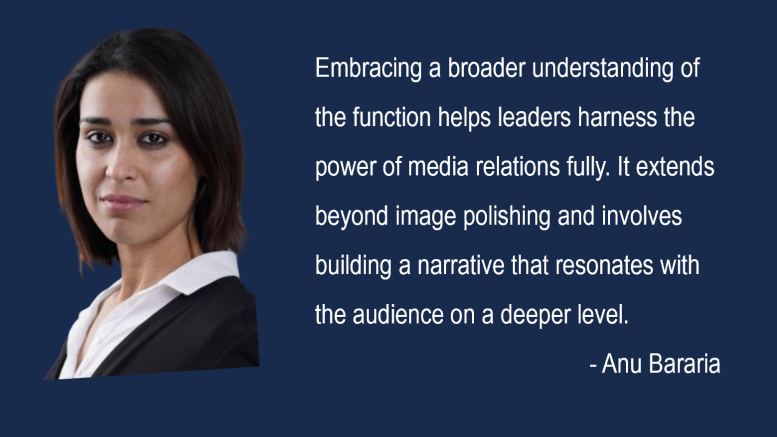In the dynamic realm of media interactions, guidance emerges as the linchpin. Whether at the helm of a multinational corporation or navigating the waters of a budding start-up, mastering the art of media handling demands finesse beyond individual opinions and notions.
Leaders, often time-constrained, may skim through media briefings. Whereas journalists, propelled by exploration, delve into the diverse facets of a story. Tangential queries have the power to alter the trajectory of a narrative significantly. Further, in this fast-paced information age, where every word and gesture undergoes global scrutiny, it can get rough.
Media relations experts step into this dynamic scenario as skilled mediators. Their craft, meticulously honed through years of practice and training, becomes pivotal in handling the nuances of media engagements and navigating leaders through the intricate web of public perception.
The Value of Foresight
I’ve witnessed leaders acknowledging the intrinsic value of guidance; fostering a symbiotic relationship with their media experts, which over time cultivates into an unspoken understanding. Guidance plays its role as the silent conductor orchestrating the harmony between the leader’s vision and its external interpretation.
However, there are instances where ego, inadvertently, takes over as an invisible decision-maker. In such cases, guidance may be dismissed as mere hand-outs, jeopardising the efficacy of media relations and impacting the overall brand positioning. The approach risks reducing media engagements to mere performances, lacking the depth and authenticity that resonates with audiences.
In this context, dispelling the misconception that media relations (or broadly speaking, public relations) is confined to press releases or scheduling becomes paramount. Media relations means a strategic partnership that shapes the very narrative of a brand. Armed with insights, media experts become architects of a positive public image, ensuring that every interaction aligns with the overarching goals of the organisation.
Embracing a broader understanding of the function helps leaders harness the power of media relations fully. It extends beyond image polishing and involves building a narrative that resonates with the audience on a deeper level. This requires proactive communication, with leaders and their media/public relations teams engaged in constant dialogue, anticipating potential tangential questions and navigating the undercurrents of public opinion and likely crises.
Navigating the Digital Age
The advent of digital platforms has heightened the need for a synchronised approach. In a world dominated by virtual channels, the dynamics of media handling extend beyond traditional interviews. Instant messaging platforms and collaborative tools necessitate real-time connections between leaders and their counterparts steering external communications. The ability to respond swiftly to emerging issues and address lateral queries is no longer a choice but a prerequisite for maintaining a positive brand image.
To conclude, the evolving media landscape demands a paradigm shift in how leaders perceive and utilise guidance. It’s not a peripheral function but a core strategy that shapes public perceptions, drives business objectives, and fortifies brand positioning. In an era of heightened exposure, the art of guidance in media handling is not just a skill; it’s a strategic imperative for sustained success.
The views and opinions published here belong to the author and do not necessarily reflect the views and opinions of the publisher.



Be the first to comment on "Navigating Media Interactions: Dodging Silent Sabotage"